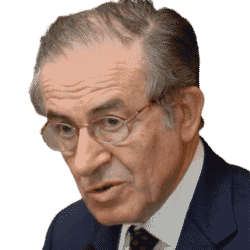Public health should be recognised as a public good, whose provision, beyond the pandemic, requires a new European agency.

When in mid-May the German chancellor, Angela Merkel, and the French president, Emmanuel Macron, presented a joint document on European medium-term recovery, most of the discussion focused on their recovery plan—and the opposition to it of the ‘frugal four’—overshadowing the part outlining a strategy towards European health ‘sovereignty’.
The EU4Health proposal indicates lines along which this European health sovereignty should be developed. First, it suggests boosting the capacity to produce affordable vaccines, co-ordinating and financing research at EU level while increasing bargaining power in the face of the pharmaceutical giants.

The two leaders called for a strengthening of the collective capacity to provide healthcare, to reduce dependency on the rest of the world and to lift part of the burden of crisis management from national systems. And, on May 27th, as part of its €750 billion Next Generation EU recovery fund, the European Commission proposed an EU4Health programme, aimed at strengthening centralised health policies through an investment of €9.4 billion.
Secondly, the commission calls for joint management and stocking of medical equipment (masks, tests and so on), to avoid the shortages and bottlenecks experienced in recent months. Supporting the digital transformation of health systems is also proposed as a means to increase the co-ordination of national systems. Last, but not least, it advocates strategies to increase access to health care including for vulnerable groups.
In short, the commission proposal highlights (along the lines of the Franco-German document) the need to consider public health as a European global public good, and to adapt the institutions to provide it efficiently at the union level. Within a policy response to the Covid-19 crisis which was appropriate overall, many of the delays and inefficiencies which nevertheless (inevitably) emerged could have been minimised through better co-ordination among levels of government, within member states and among them.
Largely uncontroversial
To build the European response and planning capacity sketched in the EU4Health initiative, we propose a European Public Health Facility (EPHF). This could eventually embed the functions and expertise of the existing EU facilities: the European Medicines Agency and the European Centre for Disease Prevention and Control.
This discussion should be separated from agreement (if any) on the European recovery fund. The scope and financing of such a facility could be rendered largely uncontroversial—the north-south faultlines would not appear and an accord could be reached quickly. More importantly, the EPHF would be a permanent facility: its long-term planning and co-ordination tasks would extend beyond the current health crisis.
Member states could create the facility as a special-purpose vehicle, modelled on the European Financial Stability Facility, predecessor of the European Stability Mechanism. The EFSF was agreed in May 2010 and fully operational a few weeks later, providing financial support to countries in distress.
As with the EFSF, the EPHF would issue bonds guaranteed by the participating member states; the commission could also or as an alternative provide guarantees, out of its budget, as it does for other programmes and proposes to do for the recovery fund. Contrary however to the EFSF, the EPHF would be permanent, and would be pivotal in supporting public-health policies during ‘normal’ times as well.
Two tasks
In a crisis such as the current one, the EPHF would have essentially two tasks. First, it could lend at preferential rates to member states facing extraordinary healthcare expenditures—on equipment, medical staff, facilities, civil protection, sanitation. This would free resources in those countries’ budgets for more general crisis-related expenditures.
In other words, the EPHF would be endowed with a lending instrument similar to the European Stability Mechanism Covid-19 credit line, but such an instrument would be permanent and would come without the controversial aspects and the stigma the ESM will always carry. The scope of the EPHF credit line could be extended to cover extraordinary expenses linked to natural disasters, such as earthquakes.
The second role for the facility during a health crisis might be the centralisation and harmonisation of data and information, as well as co-ordinating at European level the management of capacities and patients. The saturation of services in some pandemic hotspots has been a cruel reminder of the importance of co-ordination and capacity management at European level.
But the facility would have an even more important role in normal times, as a long-term provider (in the broad sense) of the European public good ‘public health’. It would finance investment in health-related infrastructures, in training and education of medical personnel and in biomedical research carried on by European consortia, with an eye to long-term planning and public utility.
There is wide agreement that much of the research on treatments and vaccines being hastily pursued in these crisis weeks would be much more effective if it could rest on a well-established, co-ordinated, consistently funded network of research centres. Current EU financing of collaborative research, such as via Horizon 2020, provides a blueprint.
Bargaining power
The centralised or co-ordinated financing of biomedical research would allow attainment of a scale big enough to bring bargaining power in the face of pharmaceutical companies, and to avoid waste and replication. Working with the European Centre for Disease Prevention and Control, and eventually merging with it, the facility could establish best practices in disease prevention and control, and could co-ordinate and co-finance the production and stocking of medical equipment, as well as their management during a crisis. Last but not least, it could act as a device for co-ordinating and planning public-health policies, eventually involving the European Investment Bank in long-term investment programmes.
Such a proposal appears to have some political space to be implemented. Regarding crisis management, conditionality would become a non-issue, as crisis-related expenditures and deficits are temporary. At the same time, the limited scope of the facility in a crisis would assuage the fears of those opposing debt mutualisation. These fears would not be justified in the long term either, as the facility would mostly function in normal times through pan-European networks, making freeriding and moral hazard vis-à-vis member states virtually impossible.
Public health is not the only European public good where the need for countercyclical policies coexists with longer-term objectives—a well-functioning labour market is another. If the EPHF proved effective in supporting public-health policies, during crises and in the long run, it could be used as a blueprint in other such domains.
Alberto Quadrio Curzio is emeritus professor of economics at Cattolica University, Milan, and former president of Accademia dei Lincei. Francesco Saraceno is deputy department director at OFCE Sciences Po, Paris, and teaches European macroeconomics at LUISS University, Rome.